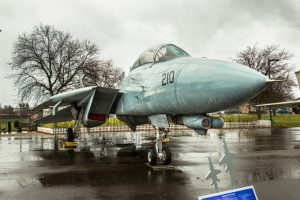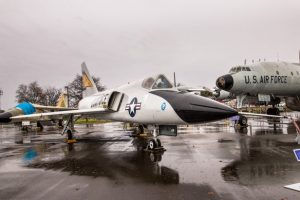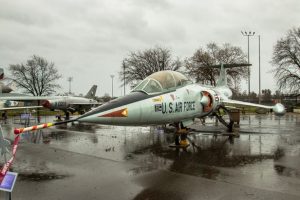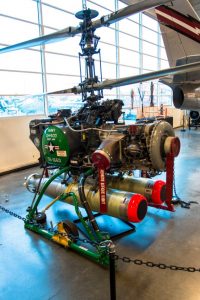The military is always ahead of the civilian world when it comes to new technologies, and it’s staggering to look back and see just how advanced aviation was as early as the 1950s and 60s, with supersonic jets, long-range remote-control helicopters, and all sorts of other innovations that feel way before their time.
Just north-east of Sacramento, on the grounds of the former McClellan Air Force Base, sits the Aerospace Museum of California that features a fascinating collection of aircraft and engines, with a particular focus on the fast and furious jet fighters and interceptors of the Cold War era.
F-14 Tomcat

With variable sweep wings (capable of asymmetric flight and designed to automatically adjust their angle for the optimum lift to drag ratio as speeds change), the F-14 Tomcat was the world’s premier air defense fighter from its post-Vietnam debut in 1972 up until its replacement by the F/A-18 Hornet in 2006. It had a top speed of Mach 2.34 and a blistering climb rate over 45,000 feet (13,700 m) per minute.
Corvair F-106 Delta Dart

Between 1959 and 1987, Corvair’s F-106 Delta Dart was a key part of America’s Cold War defense strategy in its role as “the ultimate interceptor.” Still, the fastest single-engine, single-seat fighter ever built, the F-106 could do Mach 2,4 flat out. It carried so much complex radar and computer gear to assist in its main task of intercepting and destroying Soviet bombers that it was considered the most challenging machine for pilots to fly.
Lockheed F-104B “Starfighter”

Lockheed’s F-104B “Starfighter” was designed as a Mach 2.2 interceptor and air superiority fighter. Its exceptionally small, thin wingspan of just 21 ft (6.4 m) meant that it needed to blow air back from the engine over the upper wing surface in order to generate lift at low speeds. Its top speed was limited not by drag or engine thrust limitations, but by temperature, caused by air friction on its aluminum airframe. This example was used by NASA to train pilots on how to land both the Space Shuttle and the X-15, and also as a chase aircraft.
Gyrodyne QH-50 DASH

The Gyrodyne QH-50 DASH was an unmanned drone helicopter used as a long-range anti-submarine weapon, produced between 1963 and 1969. WW2-era destroyer ships were being fitted with long-range sonar systems, but without the space for a full flight deck, they weren’t able to act on what they discovered until the DASH came along.
This small coaxial copter was able to fly up to 22 miles (35 km) from the ship with torpedoes or nuclear depth charges aboard. It was flown by two people, one on the flight deck of the ship to handle take-off and landing, and one in the Combat Information Center who would then fly it to its target and fire on the enemy.
See more HERE
Ask me anything
Explore related questions





